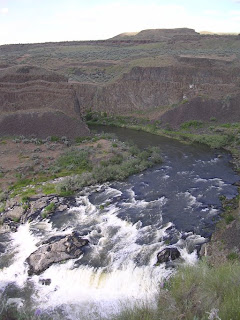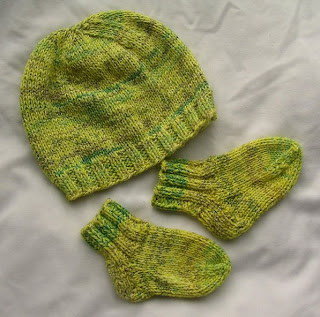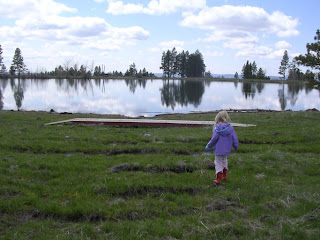Two weekends ago, May 16-18, we went over to central Oregon for the weekend. Shaun was taking the Biology Club rafting on the Deschutes River, and Emma and I tagged along. Since Emma doesn't swim well yet, we opted to go birding while they rafted. New habitat! Chance to see new critters! Yay!
Emma and I tootled off to the White River Falls State Park, and had a picnic lunch under a shady tree at the top of the falls.

After we ate, we walked the trail downstream along the river. The falls drop 90 feet, and let me tell you, the area below the falls where the spray was caught by the breeze was a welcome relief from the 100 degree heat. Lovely.
There was a colony of several hundred cliff swallows nesting below the falls, and they were out in full force. Really amazing to see that many birds at once. I tried to take a movie, but it was into the sun and obviously this doesn't do it justice. Each zooming speck is a cliff swallow.
The trail continues through the canyon for at least a quarter mile, past the remains of an old powerplant. I don't think we walked the whole trail, but it was too hot.

We walked through sagebrush and willows and rocks and sand, and I kept an eye open for snakes. I have yet to see a rattlesnake, but it seemed like a snakey area to me. We did see a garter snake and a little lizard that were too fast to photograph.

These canyons of central Oregon have beautiful rock formations.

I didn't see any new birds, and frankly, I didn't care. All I wanted to do was find some shade. So we got back in the car and headed back toward the campground. Along the way, we stopped along the Deschutes, watched Shaun and the students go by in their raft, and finally found some cool.

Poor Cobalt was so hot that she splashed into the water, found a shallow spot, and stayed there half submerged for an hour. Emma had fun floating sticks, throwing pebbles, and keeping Cobalt wet. We were lucky that the river was so high, because it was over its banks onto the floodplain and made this nice shallow wading pool for us. The main channel of the river was way to fast and deep for us to consider wading. Our pool was cold, but refreshing.
Plus, there was a flock of 15-20 butterflies next to me on the bank that were quite willing to be photographed.

Greenish Blues (Plebejus saepiolus). New species! Yay!
~~~~~end Part One, cue clever segue that I can't think of right now~~~~~
Last weekend, May 23-26, we went up to Walla Walla, Washington for Shaun to do the Onionman Triathlon. Onionman Triathlon...Walla Walla onions...get it? Hee hee! This was the longest triathlon Shaun's ever done, Olympic distance (1.5K swim, 40K bike, 10K run), and he finished in less than three hours, which was his goal. Way to go Shaun!
We brought the trailer and stayed three nights at the Lewis and Clark Trail State Park, which has a campground. It's nice and simple- just camping slots, a few water taps, and a bathroom. However, it's a beautiful little oasis in the surrounding dry land, tucked in along the Touchet River. Tons of birds, and we hadn't been there an hour yet when I saw a new life bird, a Dusky Flycatcher, about six feet from the camper. It was a lovely restful weekend, though it rained hard on Saturday night and it drizzled Sunday morning for the start of the the race. No big deal, and it cooled things off nicely.
Saturday morning, Emma and I got up early-ish and went for a walk around the campground. We saw lots of yellow warblers, western tanagers, robins, California quail, song sparrows, and chickadees, but the most exciting sight was a pair of adult Great Horned Owls and two fledglings.

These are the fledglings, 25 feet up a tree, heavily zoomed and cropped. They still had some down, but their grownup feathers were about half in. Little fuzz-butts, so cute!
After Shaun's race, and after we had decided to stay another night (there was some doubt because of the rain), we headed up to the Palouse River Falls State Park for the afternoon. There was supposedly a waterfall to see, and it wasn't too far of a drive.
Well.

It was stunning. There are really no words to adequately describe this enormous waterfall out in the middle of the dry, dry, dry shrub-steppe hills.
Again, I tried to take a movie to show the incredibleness of this waterfall, but my little camera just doesn't take great video. The power of the falling water was amazing, with the spray in clouds up to about 100 feet.
The falls drop 200 feet into a nearly perfectly cylindrical basin, then the river meanders away through a 400 foot deep canyon.

There's a paved and fenced path that extends along the edge of the cliff, from the falls to an overlook downstream. I got to see another new life bird, the White-throated Swift here. Fast, elegant, streamlined, and beautiful.
There is also a rougher, unfenced trail that goes to the only marginally less spectacular upper falls.

We walked this trail as well, maintaining a death grip on Emma. Apparently, I am afraid of heights. Having my precious four-year-old separated from the edge of a 400-foot plummet of doom by a mere two feet of dry grassy soil does not agree with my mommy-instincts. I think this is a good thing.
By the time we had worked back around to the beginning/end of the path, though, and since no one had gone over, it was worth it. The sun had lowered enough to give that wonderful saturated late afternoon glow, and as we passed beside the waterfall we saw this.































